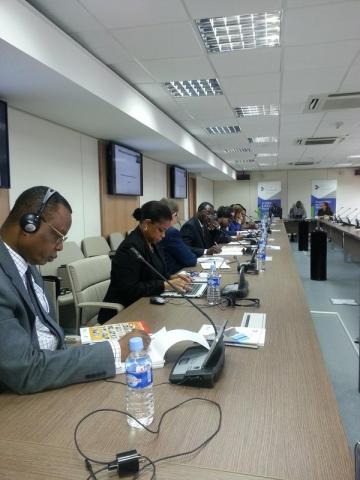
There is a broad consensus that impact evaluations are valuable in improving our understanding of what works (and what doesn’t) in the development interventions of the African Development Bank (AfDB). But when it comes to how this practice can be institutionalized across the Bank and its growing portfolio, it becomes less evident.
As it emerged from a meeting of the AfDB’s Evaluation Community of Practice (ECoP) organized by Independent Development Evaluation (IDEV) on Thursday, July 2, 2015, at Headquarters in Abidjan, impact evaluations are complex, challenging and expensive to conduct. Currently, impact evaluations are foreseen to take place for nine projects of the entire AfDB portfolio, a relatively low number compared to other Multilateral Development Banks (MDBs), experts argue.
The Bank’s Ten Year Strategy (TYS) is anchored on achieving transformation and improving the quality of economic growth in Africa based on inclusivity and a transition to green growth. According to Issa Faye, Division Manager in the Development Research Department of the Bank and chair of the ECoP event, these targets will be difficult to achieve without credible and independent evidence of what works, why and under what circumstances.
“We need to work as a team to mainstream impact evaluations in Bank’s projects in order to ensure that the AfDB succeeds in its mission for inclusive and green growth by 2023” said Issa Faye.
While there is a broad recognition of the importance of impact evaluation, it is not always easy to implement, acknowledged Karen Rot-Munstermann who represented the Evaluator General of the AfDB.
“While there is recognition that impact evaluations are crucial for evidence-based policymaking, it is not always straightforward in practice. It is difficult to establish causality between intervention and outcome,” she said.
Various speakers at the panel discussion underscored the importance of baseline data, mobilizing additional funding, building capacity and putting in place incentive structures to demand and use impact evaluations.
Impact Evaluations Not for all Projects
The AfDB currently has hundreds of interventions across a dozen sectors in many different countries across Africa. Not all these projects should be evaluated from the impact evaluation lens. “Be selective in programs that you do impact evaluations for. They need to be impact-evaluable,” cautioned Jyotsna Puri, Deputy Executive Director of the International Initiative for Impact Evaluations (3IE).
“For impact evaluations to remain relevant, the development community must think of designs that are rapid, cheap and produce quick results,” she added. “Moreover, the learning drawn from impact evaluations should be integrated into new projects and programs”.
Jacob Oduor from the Development Research Department and Rita Tesselaar from Independent Development Evaluation set out the work that the Bank is undertaking, including the Impact Evaluation Reference Group and 4 impact evaluations of water and sanitation programs currently underway. This work has faced a number of challenges but it also showing promise.
Other speakers pointed to the importance of dialogue with (local) authorities, beneficiaries and other players on the ground such as national statistical agencies and universities. The need for more long-term planning and stronger engagement with stakeholders within the Bank, particularly operations departments.
Participants concluded that the AfDB should continue to conduct impact evaluations, selectively, with well thought-through designs and the right skills mix, including those of local institutions. What is most important is to engage all relevant departments and to develop a strategy for moving forward together.
The July 2 meeting of the Evaluation Community of Practice (ECoP) is the second in a series of ongoing learning and knowledge sharing events scheduled in 2015. The next ECoP takes place on July 22, 2015 and will focus on how Parliamentarians can help create an enabling environment for decision makers to demand and use evaluations for better policy making.

